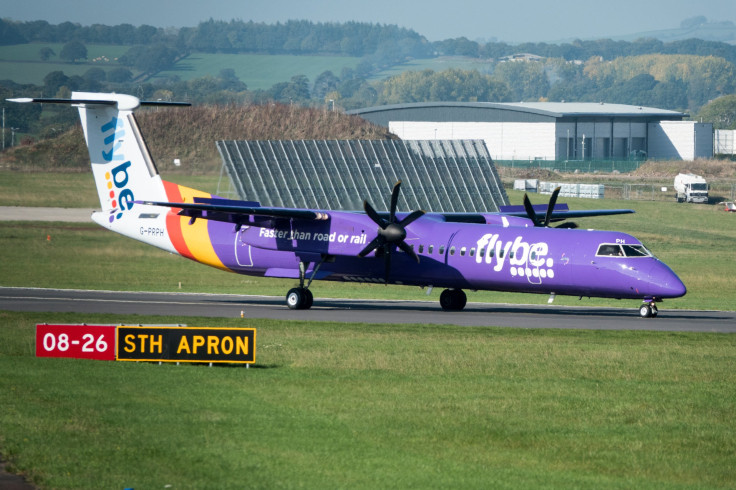Plane Drops 500 Feet In Seconds Due To Wrong Autopilot Setting

A Flybe flight dropped 500 feet in just a few seconds shortly after taking off from Belfast City Airport, Northern Ireland, due to an incorrect autopilot setting, a recently released Air Accidents Investigation Branch (AAIB) report said.
The incident occurred on Jan. 11 involving a Bombardier Dash 8 Q400 turboprop which was carrying 44 people onboard, including passengers and crew members. According to the report, the aircraft was put on autopilot mode shortly after taking off from the airport, once it reached an altitude of 1,350 feet.
According to Skybrary, a website dedicated to informing people about aviation safety and Air Traffic Management (ATM), “An autopilot is a device used to guide an aircraft without direct assistance from the pilot. Early autopilots were only able to maintain a constant heading and altitude, but modern autopilots are capable of controlling every part of the flight envelope from just after take-off to landing. Modern autopilots are normally integrated with the flight management system (FMS) and, when fitted, the autothrottle system.”
Although autopilot mode is not a rarely used setting, the Flybe pilot mistakenly set it with a target altitude of zero feet. As a result, the plane briefly continued to climb to 1,500ft but soon it “pitched nose-down and then descended rapidly.”
The captain and first officer were alerted to the erroneous setting when the cockpit alarms started going off and they quickly managed to turn off the autopilot setting and take manual control of the aircraft. Just as the plane dropped to 982 feet in 18 seconds, the pilots managed to recover the aircraft.
After the brief scare, the flight continued to its destination – Glasgow, Scotland – without any further incident and landed safely at the airport. According to Lancashire Telegraph, a spokesperson for the airline company released the following statement regarding the report:
“Flybe maintains a rigorous approach to ensuring the very highest flying standards are maintained. As reported by the AAIB, Flybe implemented remedial actions quickly in response to the incident and our training and procedures have been amended to minimize the risk of a reoccurrence. Flybe operates over 158,000 flights a year and the safety of our passengers and crew remains our number one priority.”
The airline crew later said they had “become visual with the ground" shortly before the autopilot mode was disengaged. The report surmised that if the flight reached the maximum rate of descent during the incident, which was 4,300 feet per minute, it could have crashed to the ground in mere seconds had the airline crew not intervened.
In response to the incident, Flybe said they had taken several precautionary safety measures including amendments to pilots’ pre-takeoff checklists and revisions to simulator training.
© Copyright IBTimes 2024. All rights reserved.






















